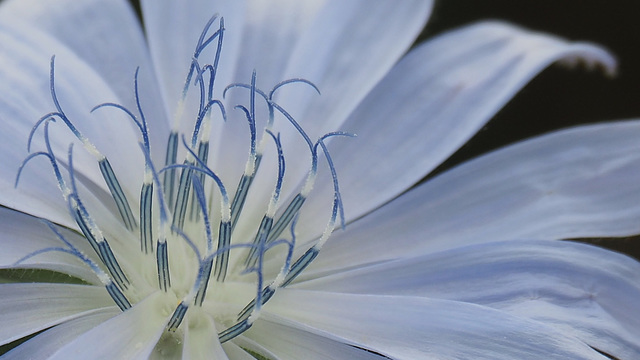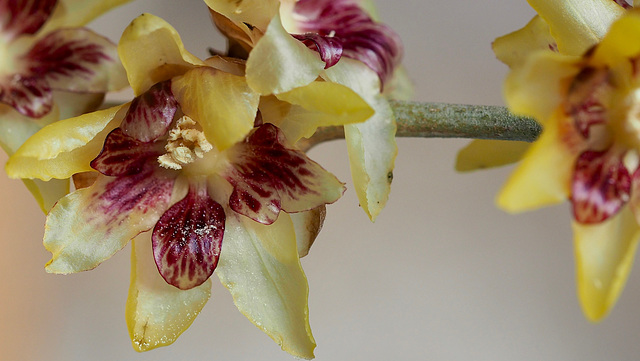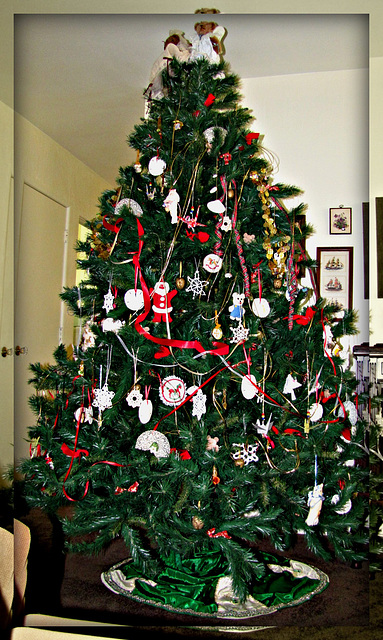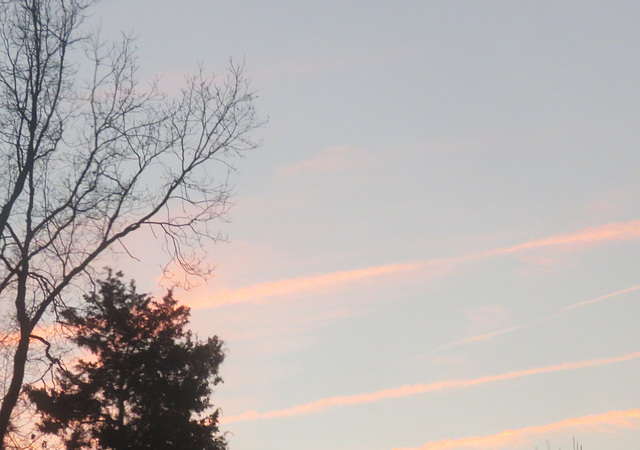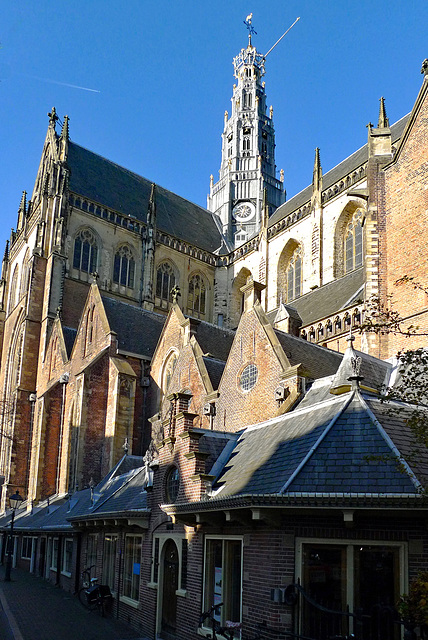ටrånnåh's favorite photos
By tiabunna
38 favorites
Agapanthus in the rain
These are flowering everywhere around here at present. Beautiful flowers, but they can become invasive.
21 favorites
Blowing in the wind
Blowing in the wind. It's Chimonanthus Winter Sweet for 11 months it's a uninteresting shrub then at Christmas time these flowers appear but what is special is it's scent, hence blowing in the wind. Many years ago I was given three seeds one eventually germinated it was ten years before it flowered
By Peggy C
17 favorites
2009 .. The Tree
all decorations are handmade..
made by nature ..
sand dollars, sea shells, angels, bears, origami Long Life Cranes, gilded walnuts, lace fans, cross-stitch ..
most are at least 20 years old ..
the only thing not handmade are the ribbon streamers ..
© All rights reserved
By Peggy C
12 favorites
Softly doth it set ..
As this year winds to a close, the Winter sunset as seen from our home to across the street -
gives me the feeling many of us have -
we are tired -
ready for a new year -
which hopefully brings more joy and happiness.
May y'all have a blessed New Year - one of Joy and Health.
Peggy C
PiP
Nederland - Haarlem, hofjesstad
Haarlem is one of the cities in the Netherlands that has a number of so called hofjes . A hofje is a Dutch word for a courtyard with almshouses around it. They have existed since the Middle Ages. In the past Haarlem had forty of them, nowadays there are more than twenty historical and some new ones left. Characteristically, almost all are built around an inner garden.
Some of them are still in use with boards of regents. Many of these are members of the Stichting Haarlemse Hofjes (Foundation Hofjes of Haarlem). The word hofje means “small garden”, because the hofjes are generally small houses grouped around a community garden with a water pump. Often they were attached to a larger field for bleaching linen or growing orchards, but today those fields have been long used for city expansion and only the central gardens can still be seen.
The historical hofjes were built from the 14th to the 19th century. They were often paid for out of inheritances from childless wealthy people from Haarlem. Many are named after such a wealthy person. The “Hofje van Bakenes” - founded in 1395 - is the oldest hofje . It was named after Dirck van Bakenes.
The hofjes were built for indigent elderly (mainly women). They were housed in small houses around a courtyard designed as a garden. Age was not the only admission criterion. Being a member of the right church community, or belonging to a guild was a decisive factor in being allocated a house. Another requirement was that residents had to be self-reliant. Often the entrance was formed by a gate that was locked in the evening. Sometimes, only such a gateway still reminds of the place where one of the hofjes was once located.
Nowadays they have not changed in museums: hofjes are still inhabited today. Often by elderly ladies, sometimes a mix of ages and a few hofjes also admit couples or men. Besides being a place to live, hofjes are also a tourist attraction. Many of the hofjes are freely accessible, but be aware they have limited opening hours.
During our stay in Haarlem, we did the so called “Hofjes wandeling”. A great way to discover some of these hidden gems and the city of Haarlem
Nederland - Haarlem, Grote of St.-Bavokerk
The reformed Grote of St.-Bavokerk (Great or St.-Bavo Church) is a former Catholic cathedral. The church is a late Gothic cross-basilica with a slim line cross tower. The very first St. Bavo Church was already mentioned in 1245 and was considered prominent, among other things because of its belfry. The Church is built in basilical style: the nave is twice as broad as the side aisle.
The direct predecessor of the present church consisted from a choir, nave, transept and a west tower which was tall enough to be used as a watchtower for firemen. This tower had a peak made of slate and probably also lead and possibly also a small lantern. It was provided with a weathercock and a clock with a bell. In 1423/1433 a richly decorated Font Chapel was built against the west side of the church with a charming baptismal font in it with a wrought-iron tap.
The design for the stone tower was made in 1502. The tower seemed to be too heavy for the crossing pillars and one of the pillars sank; some gravestones around it cracked. Between 1514 and 1517 the tower was then broken off again and replaced by a wooden crossing tower covered with lead. The dimensions of the 76 meters high tower are immense: 35 to 40 meters height, an ‘onion’ of 3 meters high and in diameter; a cross of 550 kg, a cock of 65 kg and a carillon with 47 bells of more than 10.000 kg and the weight of the leaded paneling about 85.000 kg. Some more facts and figures of the church: length 108 meters, width of the nave + side aisles 31 meters, widest point of the church 47 meters, height of the nave 29 meters,
The Grote of St.-Bavokerk was and still is an important landmark for the city of Haarlem and has dominated the city skyline for centuries.
Nederland - Haarlem, Grote of St.-Bavokerk
The Grote of St.-Bavokerk (Great or St.-Bavo Church) is located in the center of the city of Haarlem. With its 76 meters high wooden tower - covered with lead - the church is a well known landmark. The medieval gothic cruciform church is one of the largest in the Netherlands.
The impressive interior of the gothic church offers a lot of splendid (architectural) highlights. Unique in the church are the beautiful wooden ceiling vault, the many stained-glass windows and the the floor, which consists entirely of 1.500 gravestones; the oldest is dating back to the 15th century. Until 1831 graves were allowed in the church, and many illustrious Haarlemmers through the centuries are buried there.
The choir - built in 1370-1400 - is closed off at the front by a masterpiece of medieval craftsmanship: a copper choir screen from 1517. The choir stalls are dating back to the beginning of the 16th century; the coats of arms were applied later.
The famous Müller organ was played by many well known musicians, including Mendelssohn, Händel and the 10-year-old Mozart. The organ counts 5.068 pipes and is almost 30 meters high.
L'étang au contre-jour
Avec cette vue lumineuse en plein hiver, je vous souhaite une BONNE ANNEE plein d'espoir. "L'espoir, c'est d'être capable de voir la lumière malgré l'obscurité".
THE POND IN THE BACKLIGHT. With this bright view in the middle of winter I wish you a GOOD NEW YEAR of hope. "Hope is able to see light despite the darkness".
DER WEIHER IM GEGENLICHT. Mit dieser hellen Ansicht mitten im Winter wünsche ich euch ein GUTES NEUES JAHR voller Hoffnung. "Hoffnung ist, trotz der Dunkelheit Licht sehen zu können".
Jump to top
RSS feed- Latest favorites - Subscribe to the favorite docs of ටrånnåh
- ipernity © 2007-2024
- Help & Contact
|
Club news
|
About ipernity
|
History |
ipernity Club & Prices |
Guide of good conduct
Donate | Group guidelines | Privacy policy | Terms of use | Statutes | In memoria -
Facebook
Twitter



